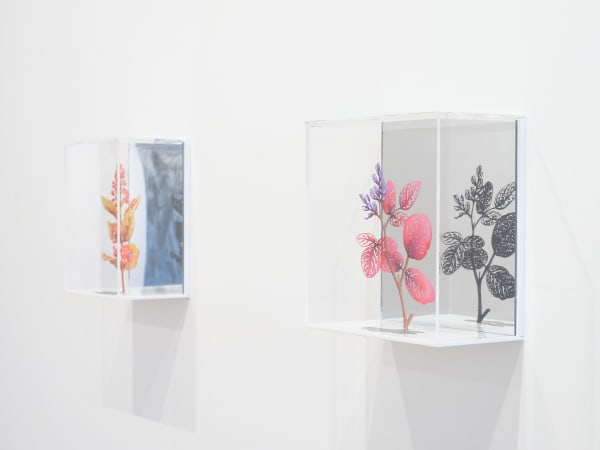Current
-

This Must Be the Place
Inaugural Exhibition 6 Apr - 4 May 2024 Onehunga This Must Be the Place is the inaugural exhibition at Gow Langsford’s flagship Onehunga premises. It brings together the work of a diverse range of artists who respond to themes of place, belonging, and cultural legacy. In examining locality in Aotearoa and Oceania through a modern and contemporary lens, This Must Be the Place showcases a diverse range of practices and contextual frameworks from the region. Read more -

Collective Visions
New & Recent Works by Represented Artists 10 Apr - 4 May 2024 Auckland City Collective Visions showcases new and recent works from many of the artists in our Gallery stable, including Dick Frizzell, Reuben Paterson, Graham Fletcher, Hugo Koha Lindsay, Virginia Leonard, Gregor Kregar, Matthew Browne, David McCracken, Chris Heaphy, Max Gimblett, Michael Hight, Karl Maughan, and newly announced represented artist, Patricia Piccinini. Read more -

Aotearoa Art Fair 2024
Booth G15 & U30 18 - 21 Apr 2024 Offsite Gow Langsford at Aotearoa Art Fair 2024, showing works by Grace Wright, Sara Hughes, Virginia Leonard, Sara Hughes, David McCracken, Julian Schnabel and more. Read more
Upcoming
-

I Stain My Heart With Thoughts Of You So Resistant
Aiko Robinson 8 May - 1 Jun 2024 Auckland City Presenting Aiko Robinson's first solo exhibition at Gow Langsford. Further information to come; contact us below to stay up to date. Read more -

The Golden Arm
Max Gimblett 5 - 29 Jun 2024 Auckland City New work from beloved New Zealand artist Max Gimblett. Read more
Past
-

The First Days in a Strange New Land
Chris Heaphy 13 Mar - 6 Apr 2024 Auckland City Chris Heaphy has been active as an artist for more than three decades. During that time, he has created a significant body of highly engaging artwork. Visually and conceptually nuanced, his work has examined themes of time, place, and memory. These themes have remained consistent while the artist has moved through several different approaches to image-making. Read more -

The Plimsoll Line
Hugo Koha Lindsay 14 Feb - 9 Mar 2024 Auckland City The Plimsoll Line presents Hugo Koha Lindsay’s latest body of paintings. These works bear a visual relationship to earlier iterations of his practice – with monochromatic or dichromatic palettes, clusters of abstract markings, and a clean, considered aesthetic. Yet, they differ in the level of intent behind the mark making. Lindsay’s earlier works made use of incidental processual markings, whereas the paintings in The Plimsoll Line feature more deliberate impressions. Read more -

Flora & Fauna
Zadok Ben-David 14 Feb - 6 Mar 2024 Auckland City Gow Langsford is thrilled to present Flora & Fauna, a selection of artworks by London-based artist Zadok Ben-David. Active since the late 1970s, Ben-David has exhibited in a broad range of international contexts where his work has met widespread acclaim. The intricately painted stainless steel artworks presented in Flora & Fauna provide a compelling view of the artist’s practice, showcasing the technical and conceptual finesse that has underpinned his global success. Flora & Fauna is Ben-David’s first exhibition in New Zealand. Read more -

Summer Paintings
Group Exhibition 17 Jan - 10 Feb 2024 Auckland City Gow Langsford is pleased to present Summer Paintings. This exhibition presents a selection of paintings from six painters – Dale Frank, Séraphine Pick, Judy Millar, Ruth Ige, Karl Maughan, and Allen Maddox. The works are eclectic in style, ranging from the Maughan’s meticulously detailed 1997 gardenscape Ashurst through to Millar’s mesmerising Rows for Gertrude Stein, a monochromatic gestural painting from 2002. Each of the paintings demonstrate the skill, flair, and distinctive vision of the artist behind them. Read more -

Rhododendrons
Karl Maughan 6 Dec 2023 - 13 Jan 2024 Auckland City New exhibition of garden landscape paintings by Karl Maughan at Gow Langsford Gallery. Read more -

Summer Editions
Group Exhibition 6 Dec 2023 - 10 Feb 2024 Auckland City We are delighted to present Summer Editions. This exhibition features editioned works by Gow Langsford artists, including John Pule, Max Gimblett, Reuben Paterson, Dick Frizzell, Brett Graham, and Gregor Kregar, as well as prints by famed NZ artists Don Binney and Pat Hanly. Read more










